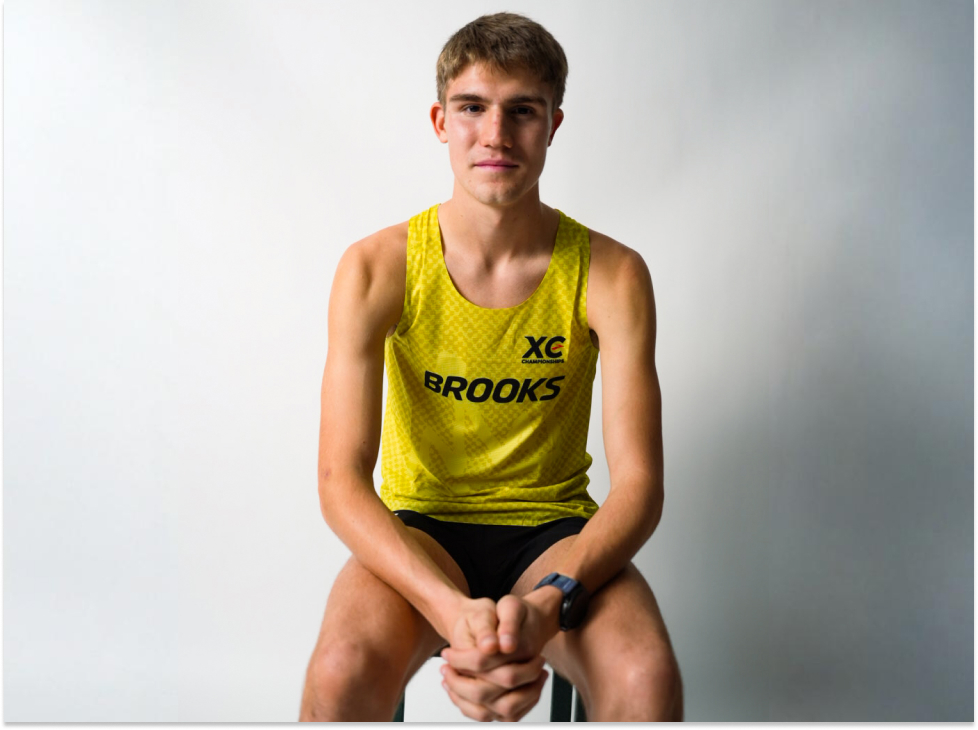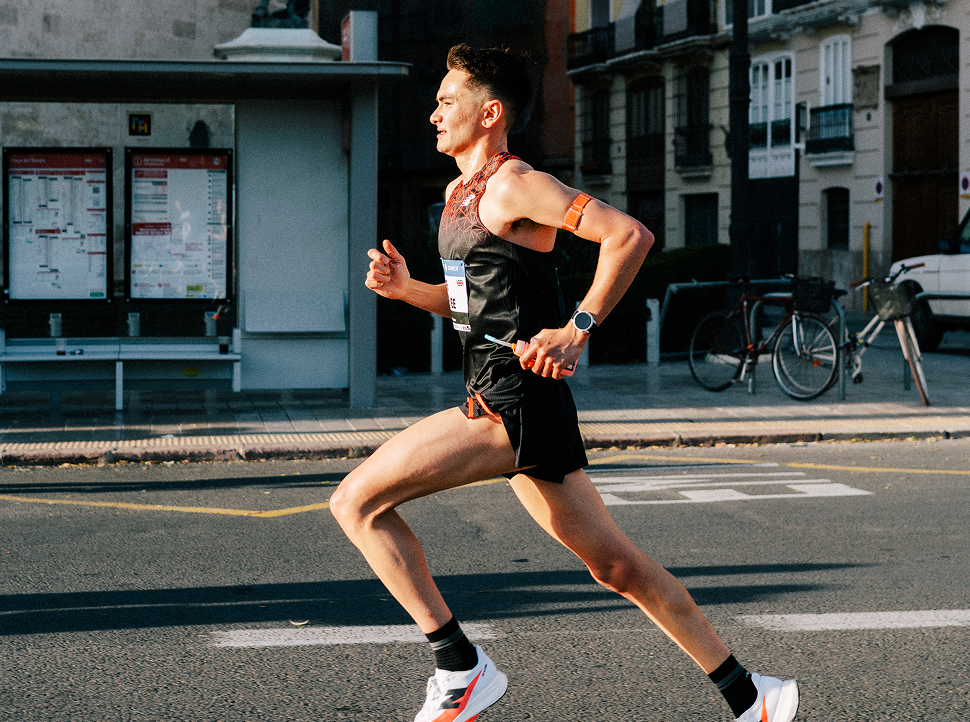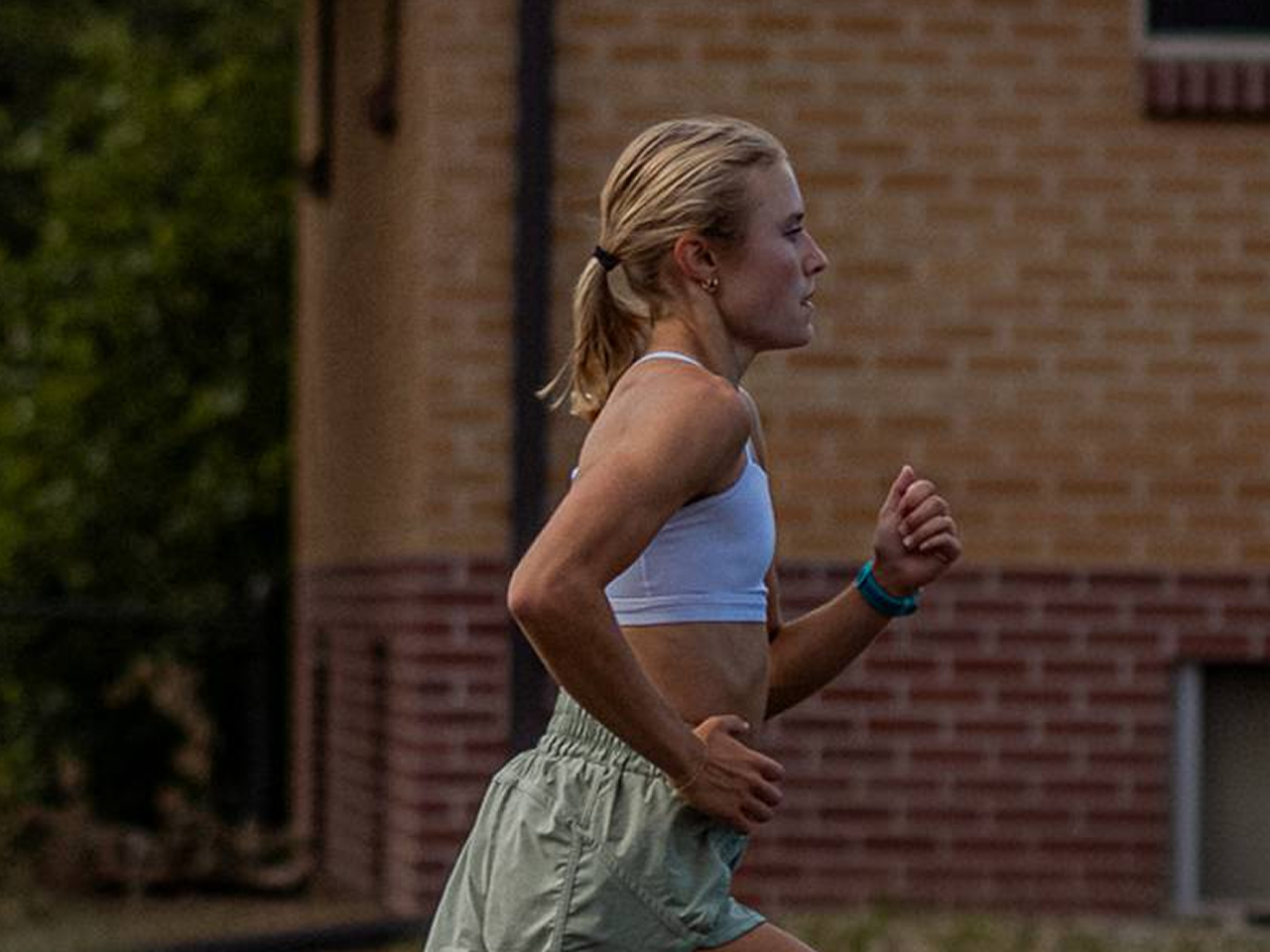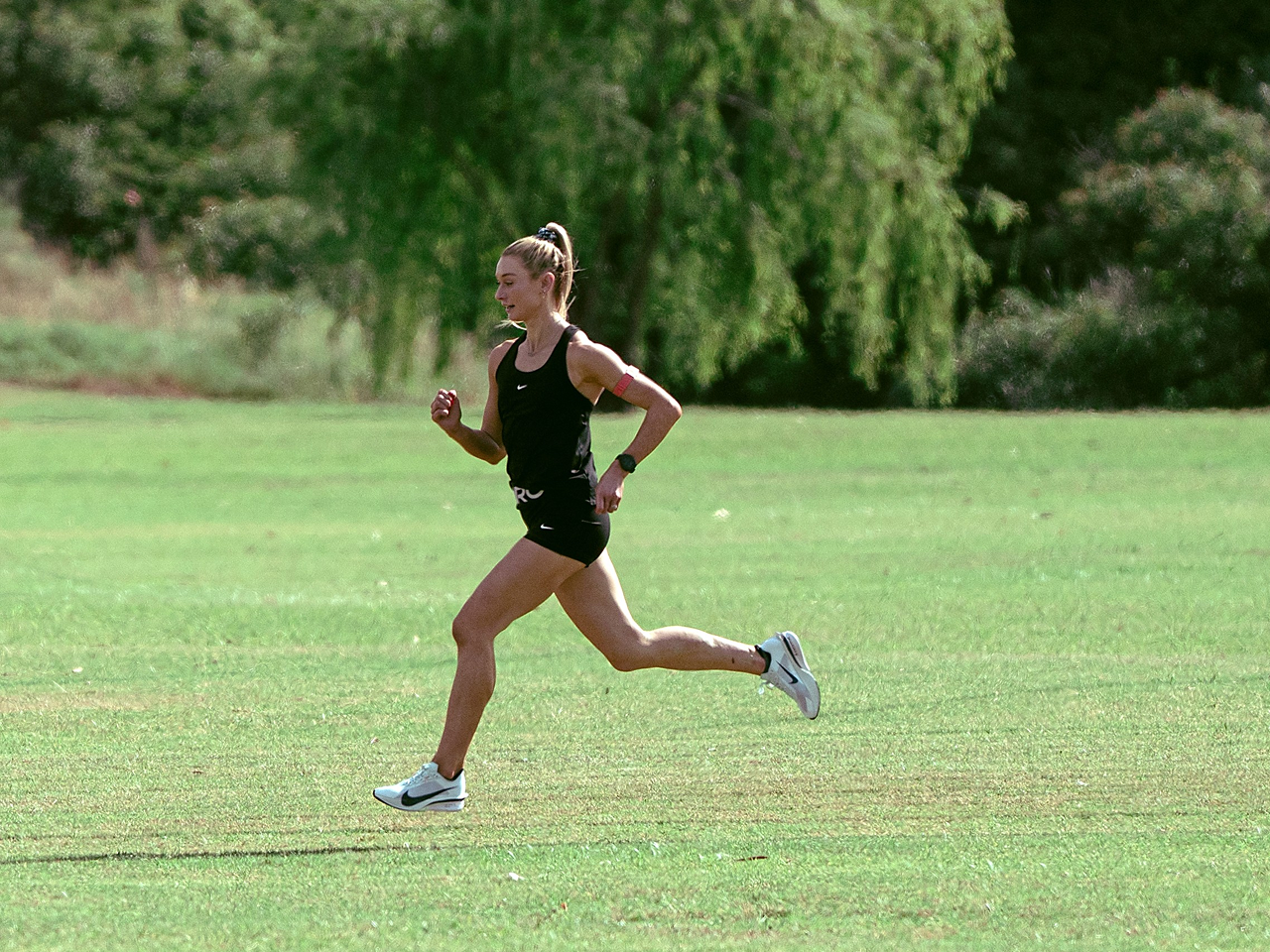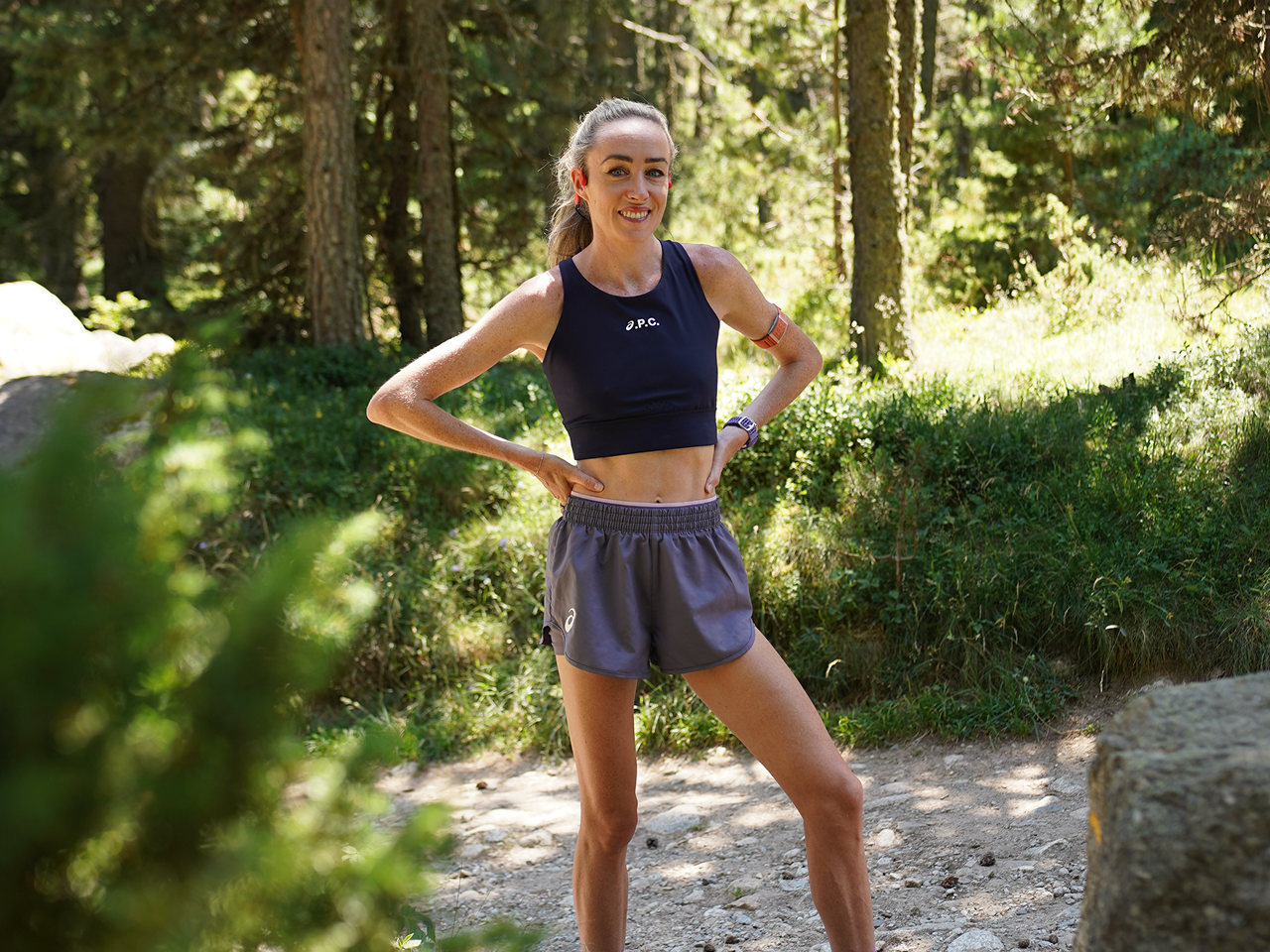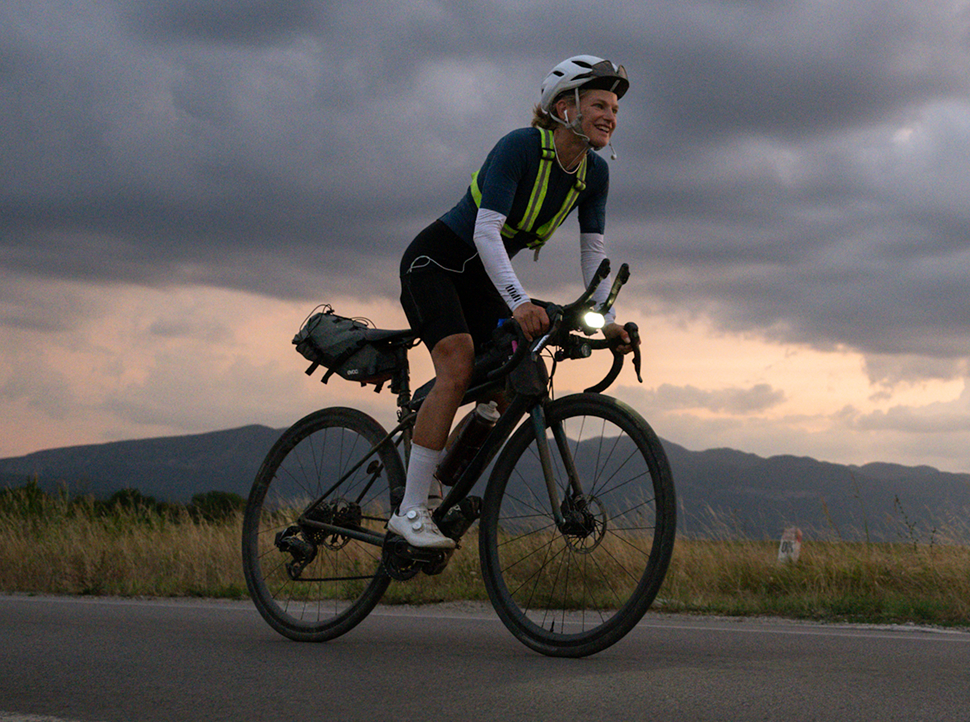OCC (55km) is one of three World Series Final events at UTMB each year. Bringing out the fastest short-distance ultra-trail athletes in the world, this race requires technical abilities to navigate the terrain and speed to compete over the 55-kilometer course. While CCC and UTMB are known for their distance, OCC stands alone as the fastest ultra-marathon of the series and pushes athletes to their limits. With the 2023 OCC final now finished, we take a deep dive into 3rd-place finisher Antonio Martinez-Perez's data. Below is a breakdown of his training leading up to UTMB week and his performance on race day.
Watch: COROS APEX 2 PRO Chamonix Edition
Analysis Tool: COROS Training Hub
2023 Training
When preparing for an event, athletes put themselves through rigorous training and aim to build fitness and speed/strength as they near their event. By utilizing his COROS watch, Antonio was able to track all of his data throughout the year to ensure he was preparing correctly for the largest race of the year, OCC. Below, we will look closer into his yearly fitness build, the intensity of his workouts, and how Antonio dialed in his taper prior to OCC.
Base Fitness

Base Fitness tracks your daily training load over a 42-day average.
With Base Fitness, athletes should look for an upward trend as they have dedicated training blocks. By measuring your 42-day Training Load, athletes can better understand if their training is providing enough stress to improve their overall ability. As seen above, Antonio had three clear training blocks this year which helped him build his base fitness from 200 up to 346 at his peak. To highlight this in another way, over the last 42 days ending on Aug 24th, Antonio was averaging 346 Training Loads each day which is an exceptional amount. For amateur athletes, you can expect far lower values, but with years of training and a strong understanding of his body and ability to recover, Antonio reached a peak value just seven days prior to his race. This is a fantastic example of what a yearly build should look like, even if your numbers won't mimic those of Antonio's.
Training Intensity
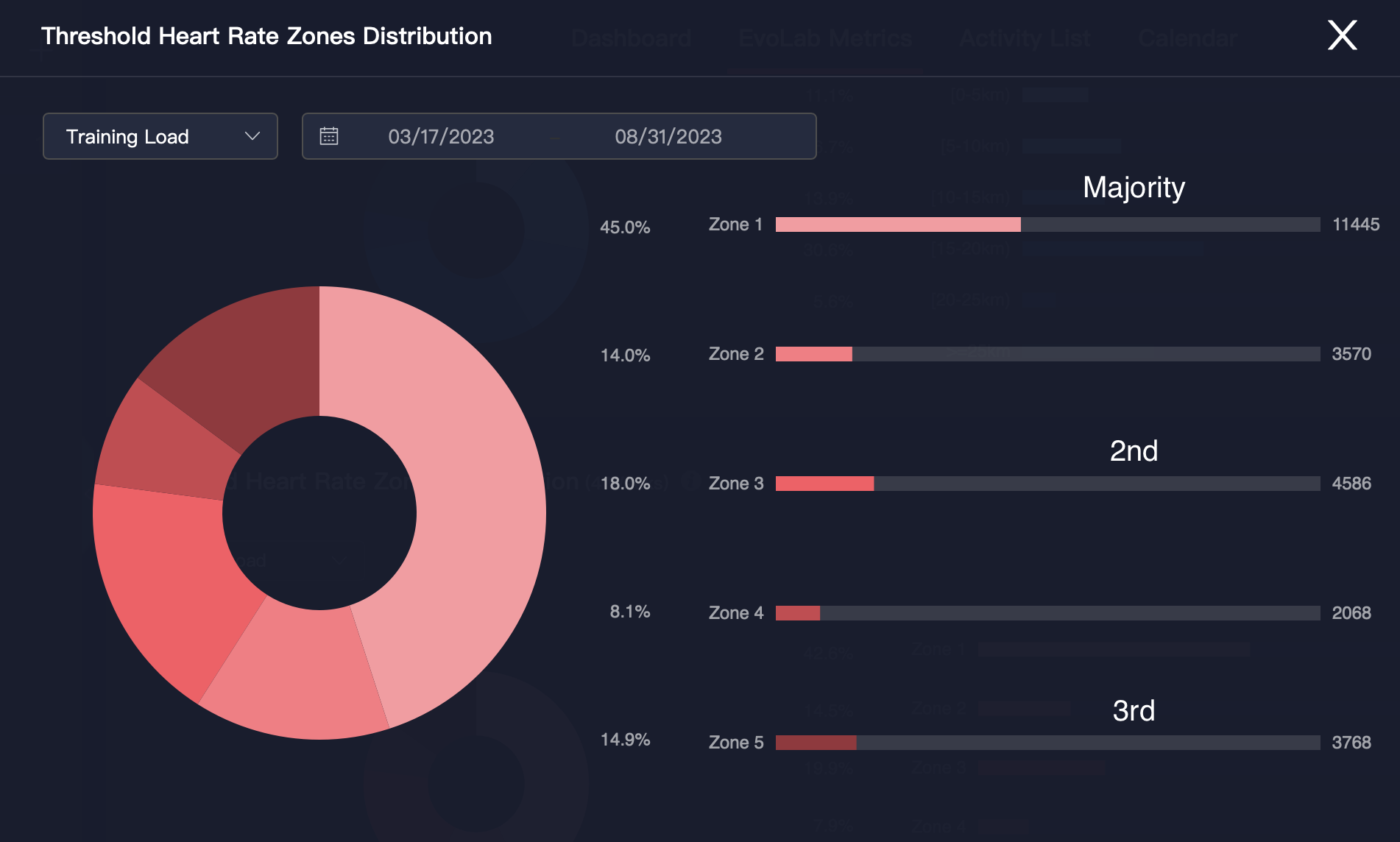
Tracking HR Zone Distribution allows athletes to quantify how hard their training is.
By wearing a COROS watch, you'll collect heart rate data directly from your device. This data will then automatically upload into the COROS App and Training Hub, allowing athletes to analyze their training trends. When we look at Antonio's HR data from his last 24 weeks, it is no surprise that he gets most of his training in Zone 1 (Aerobic Endurance). This allows him to continually train without needing additional recovery. An interesting note from Antonio's data is that he gets more time in Zone 3 and Zone 5 compared to Zone 2 and Zone 4. As the zones go up in number, the intensity gets harder. This strategy by Antonio is no accident, as he needs a large aerobic base to sustain his longer races, but he also needs specific intensity work to increase his speed and strength. Zone 3 (Threshold) allows Antonio to build lasting speed over longer distances (up to 100 minutes for the best athletes in the world) and Zone 5 (Anaerobic Power) ensures he has the ability to surge as needed on steep inclines (up to 90 seconds). When you mix Antonio's Aerobic Endurance, with his Threshold, there is no doubt he has the ability to run fast for long periods of time, and when you add in the ability to surge, you end up with an athlete who is trained for a podium result at the World Series Final.
Taper
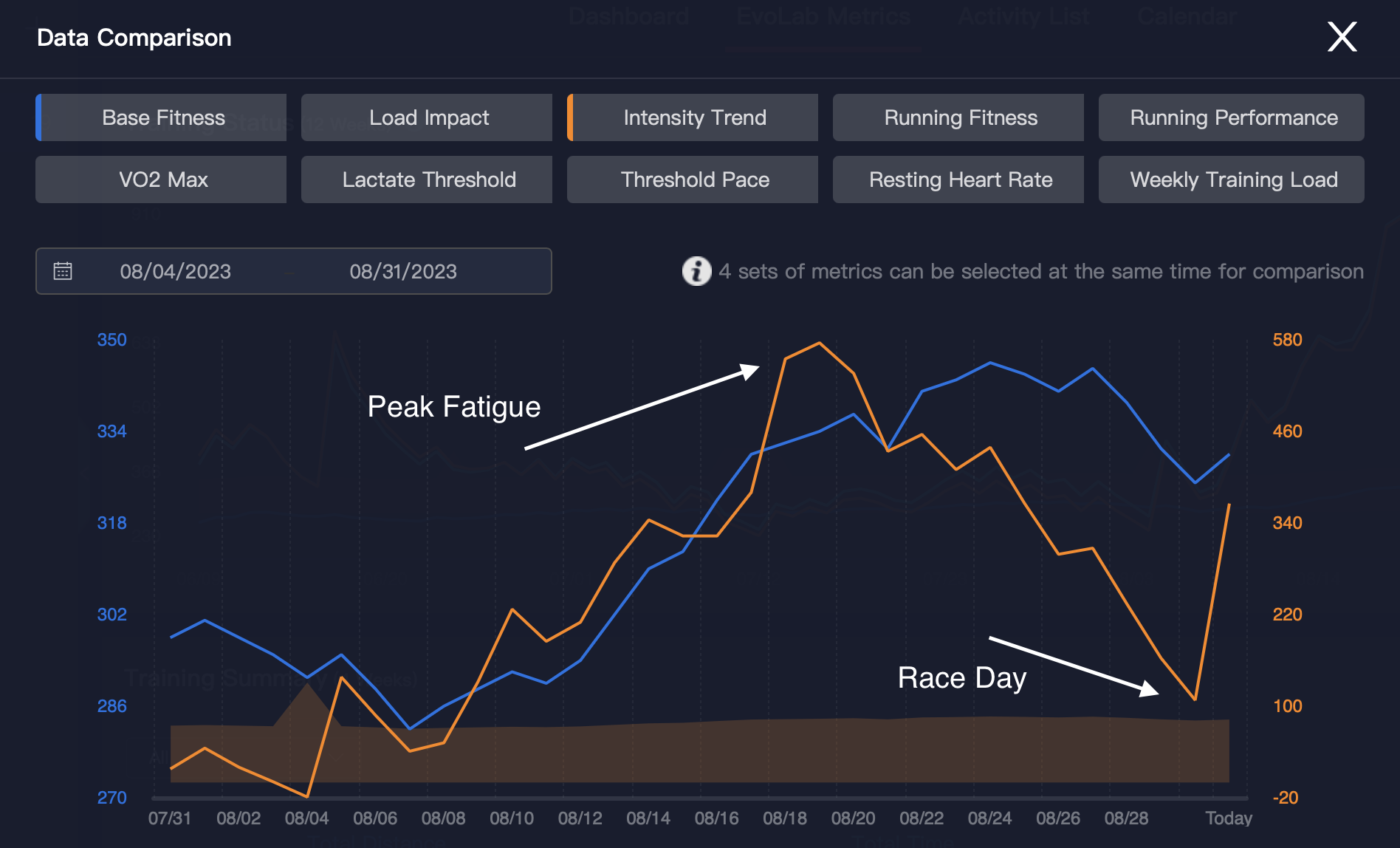
Intensity Trend allows you to see your fatigue and monitor your taper.
A taper is a difficult thing for athletes to get exactly right. Many times, athletes will follow a 7-14 day taper without understanding how to measure their fatigue/fitness. Within the COROS ecosystem, athletes can track how their fatigue is building and use this tool to ensure a proper recovery before race day. When Looking at Antonio's data, he performed a 7-day taper, drastically reducing his fatigue. While Antonio likely could've recovered even further, he is an experienced athlete and pushed his fitness peak in the weeks leading up. Athletes should look at their best race performances and begin to associate strong results with a certain level of fatigue they are carrying. For perspective, Antonio also podiumed (2nd place) in the 2022 OCC and also had a positive fatigue rating on race day. Knowing that he can perform extremely well while still carrying some fatigue, this was the right strategy for him. For all other athletes, COROS would urge you to look closer at your own data points to see what works best for you!
2023 OCC
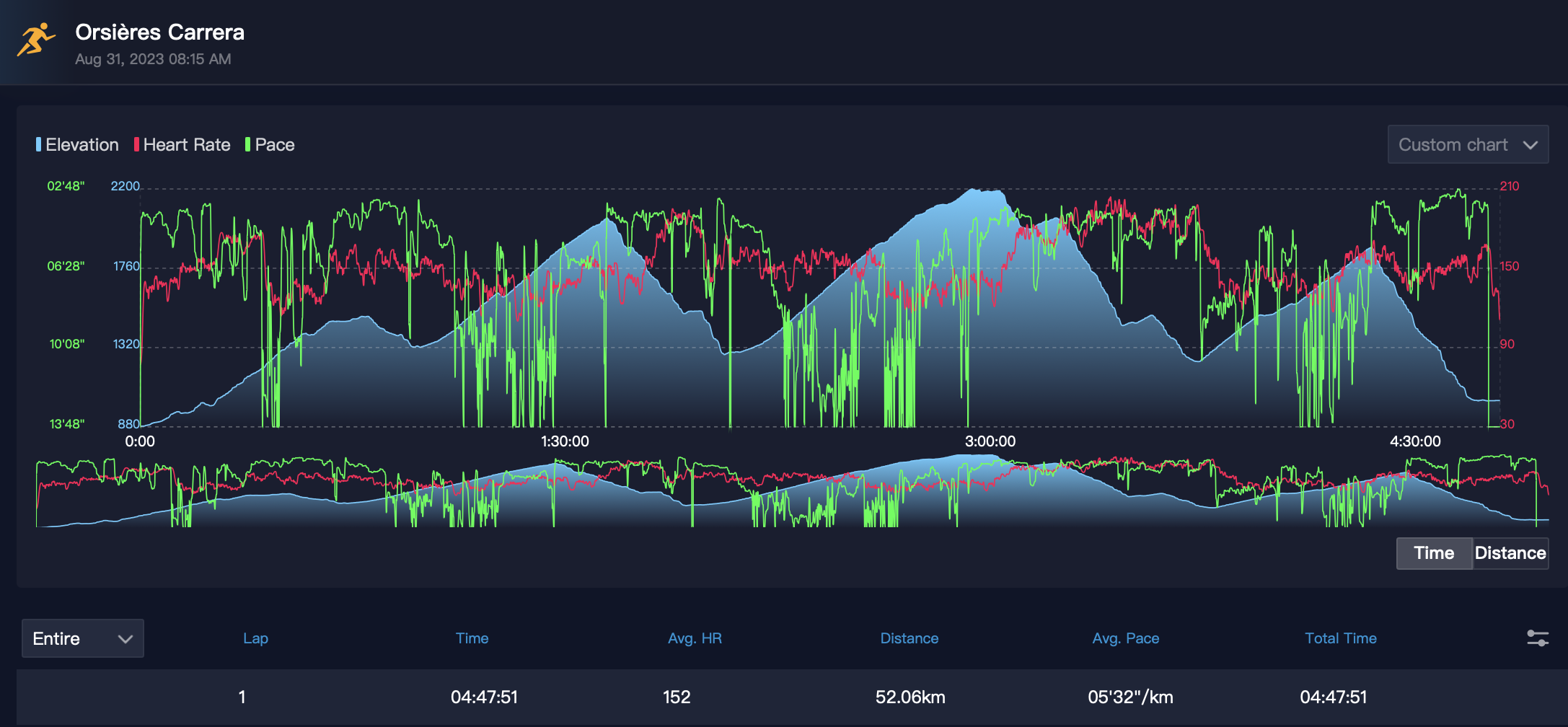
Athletes can analyze workouts within the Training Hub for better insights.
Antonio is quite an experienced runner. Having run many major ultra-distance events, he knows what his body can, and can't do. By having the discipline and trust to perform on race day, Antonio followed a plan to start conservatively and finish strong, similar to his tactics used in 2022. By doing so, Antonio was in 21st place at the first checkpoint (7km), but over the course of the next 45 kilometers, he would claw back 18 of those spots on his way to a podium result. Below you can see a breakdown of his strategy and stats
Orsieres to Champex-Lac
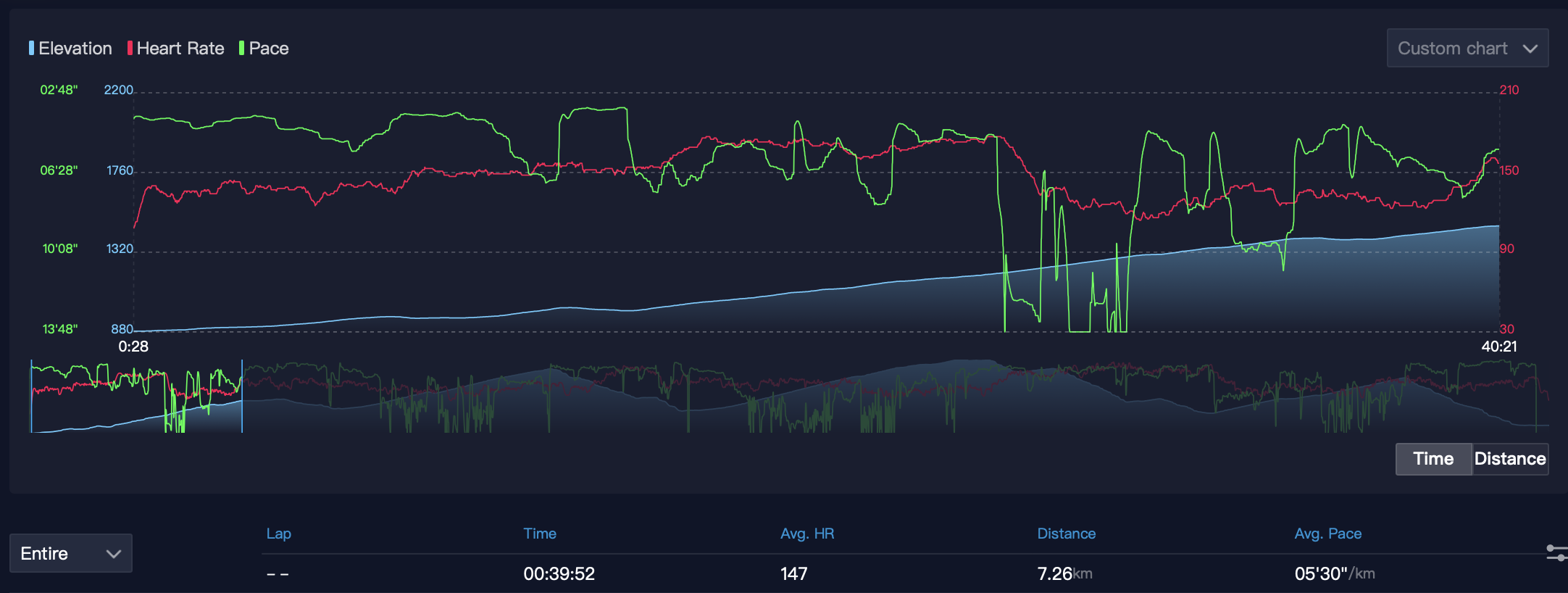
With the pace of the 2023 OCC starting fast, Antonio let the pack run away from him early as he settled into his Aerobic Power heart rate zone (146-153 bpm). For Antonio, this is a pace he could maintain for up to 5-8 hours before needing to slow down. Without wanting to burn energy early, Antonio let the field run away from him and was in 21st position following the first checkpoint. This resulted in an average pace for Antonio of 5:30/km which was well within his abilities.
Champex-Lac to La Giete
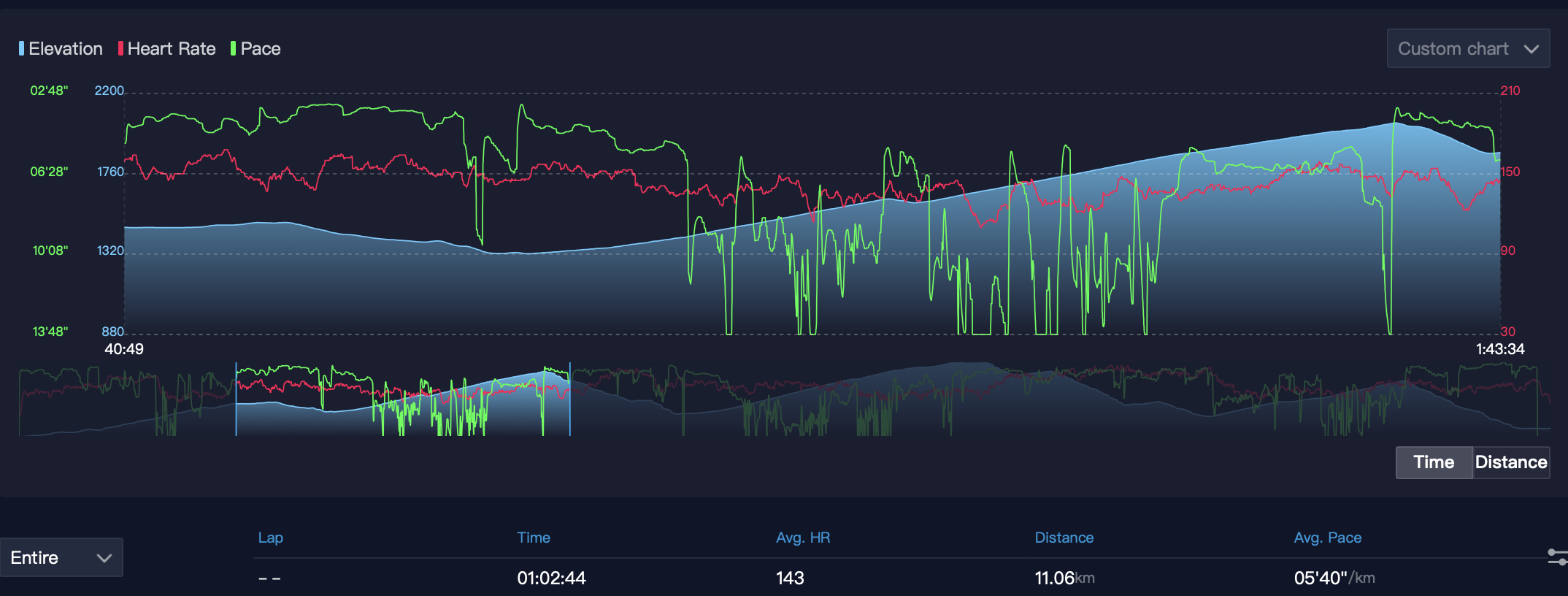
Over the course of the next hour, Antonio followed much of the same strategy. Maintaining a lower heart rate overall, he settled into his groove and averaged 143 bpm with an average pace of 5:40/km. This section saw the first of 3 sustained climbs with Antonio hitting a peak of 157 bpm on the uphill section. Pushing just a bit harder on the uphill sections, Antonio was able to work his way from 21st to 17th and was beginning to climb the leaderboard with 2/3 of the race still to go.
La Giete to Trient
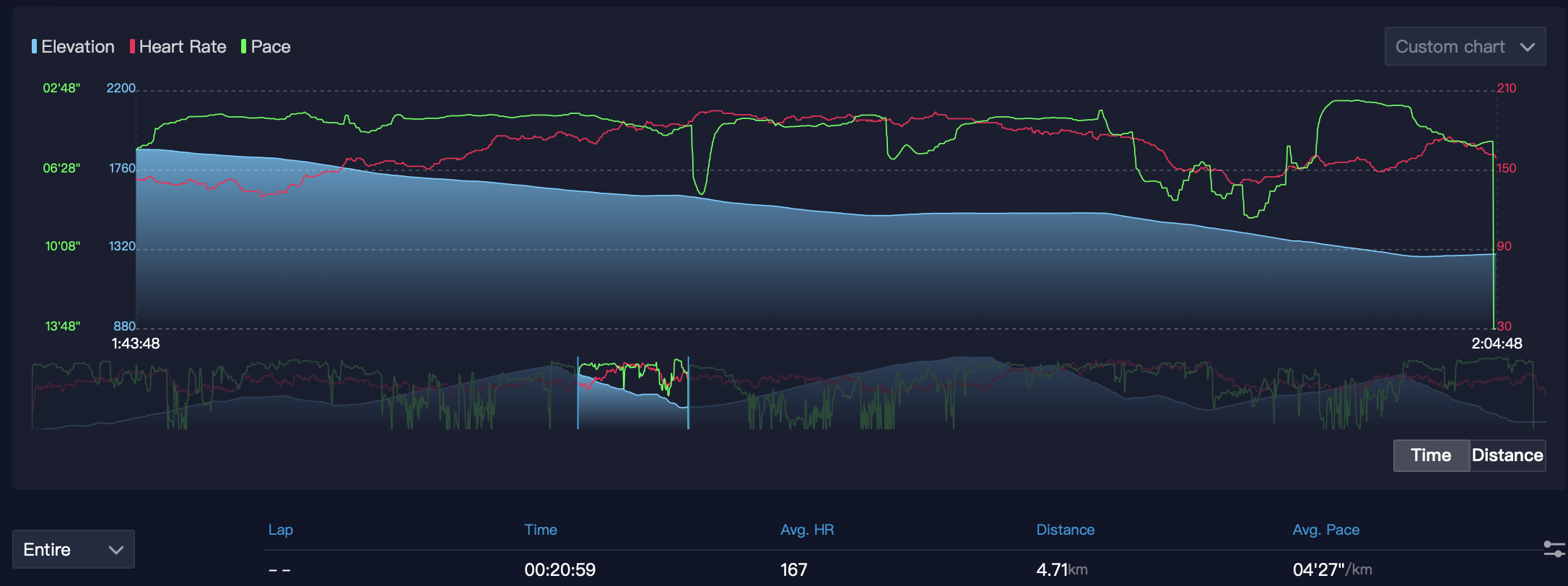
A shorter section of the course, the 3rd checkpoint is a net downhill where athletes are flying! Antonio lifted the pace here and was going back and forth between his Threshold and VO2 heart rate zones. Averaging 167 bpm for this section, Antonio was able to hold a 4:27/km pace and gain two spots on the field. Moving from 17th to 15th, Antonio is now within striking distance of the top 10 with plenty of course still to go.
Trient to Col de Balme
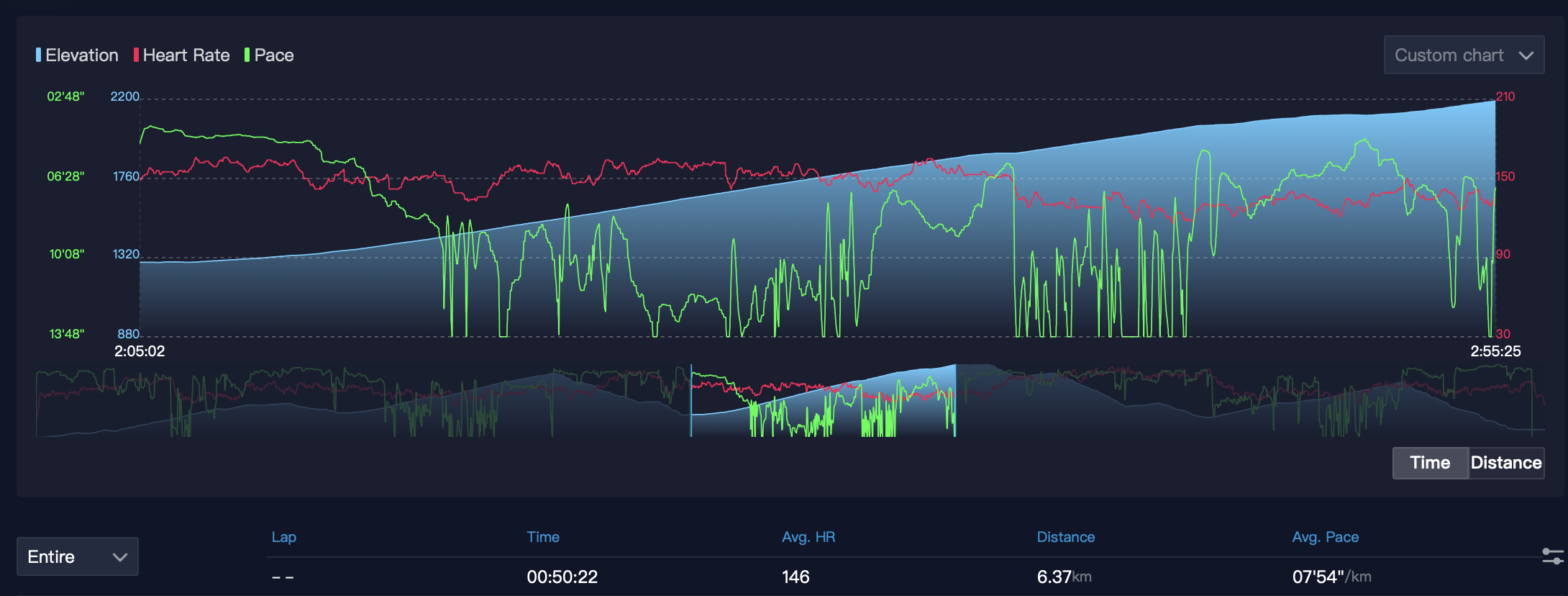
Following his fast descent into Triente, Antonio was quick to settle back into his Aerobic Endurance/Aerobic Power zone on the ascent to Col de Balme. While this was the slowest (steepest) section of the course, Antonio was moving fast relative to the competition. Antonio was able to average 7:54/km and pass seven athletes along this section. Moving into 8th position, we are now past the halfway point of the course and the top athletes are all moving fast. With only 20+ kilometers to go, Antonio needs to make a decision on how hard he can push these final sections to make up much-needed ground.
Col de Balme to Argentiere
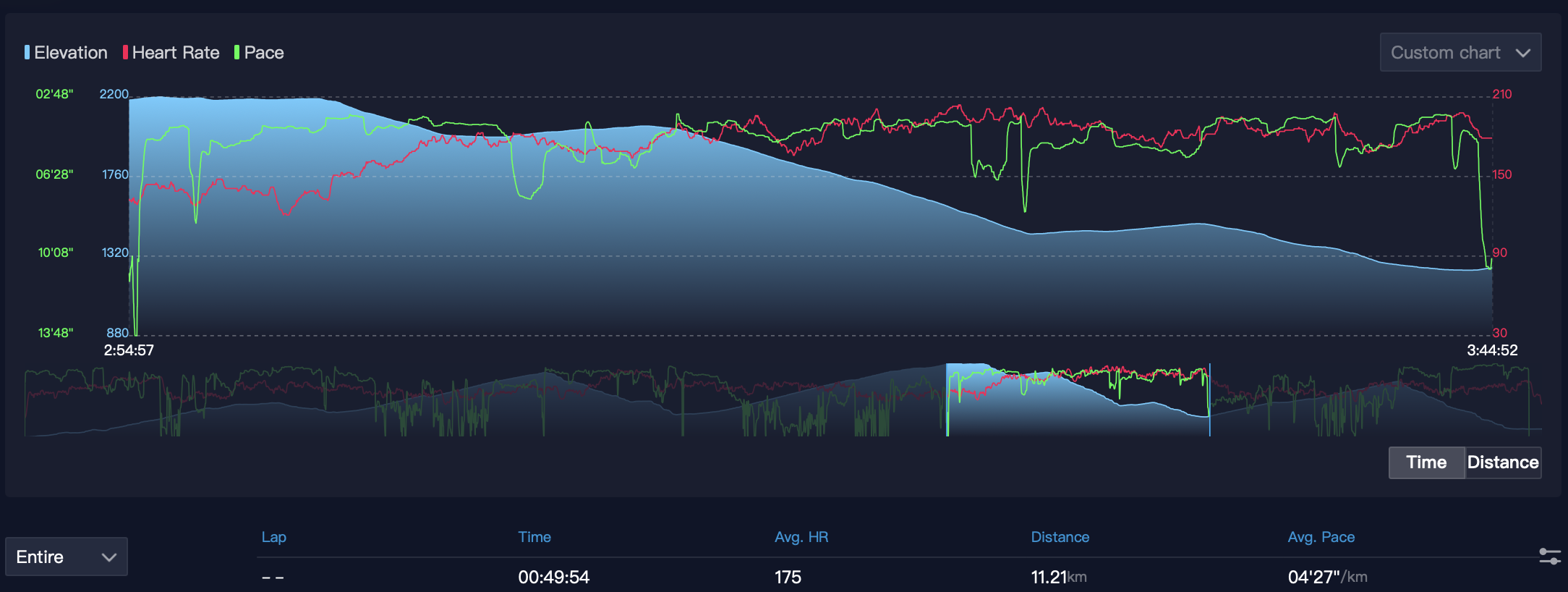
The great thing about starting a race conservatively is that it means you have more energy later when others are beginning to slow. While the front end of this field is made up of elite athletes, there is only so much energy the body can use before it fatigues. Trusting that his strategy would work, Antonio was pushing the downhill sections to his limit. Holding an average of 175 bpm, Antonio was operating at or above his Threshold and then surging as needed. If you remember his training intensity strategy, this is exactly how he has trained for the last 5 months prior to race day. This effort resulted in an average pace of 4:27/km and gained him one more spot on the leaderboard. Now running in 7th place, Antonio has one more climb and descent until the finish in Chamonix.
Argentiere to La Flegere
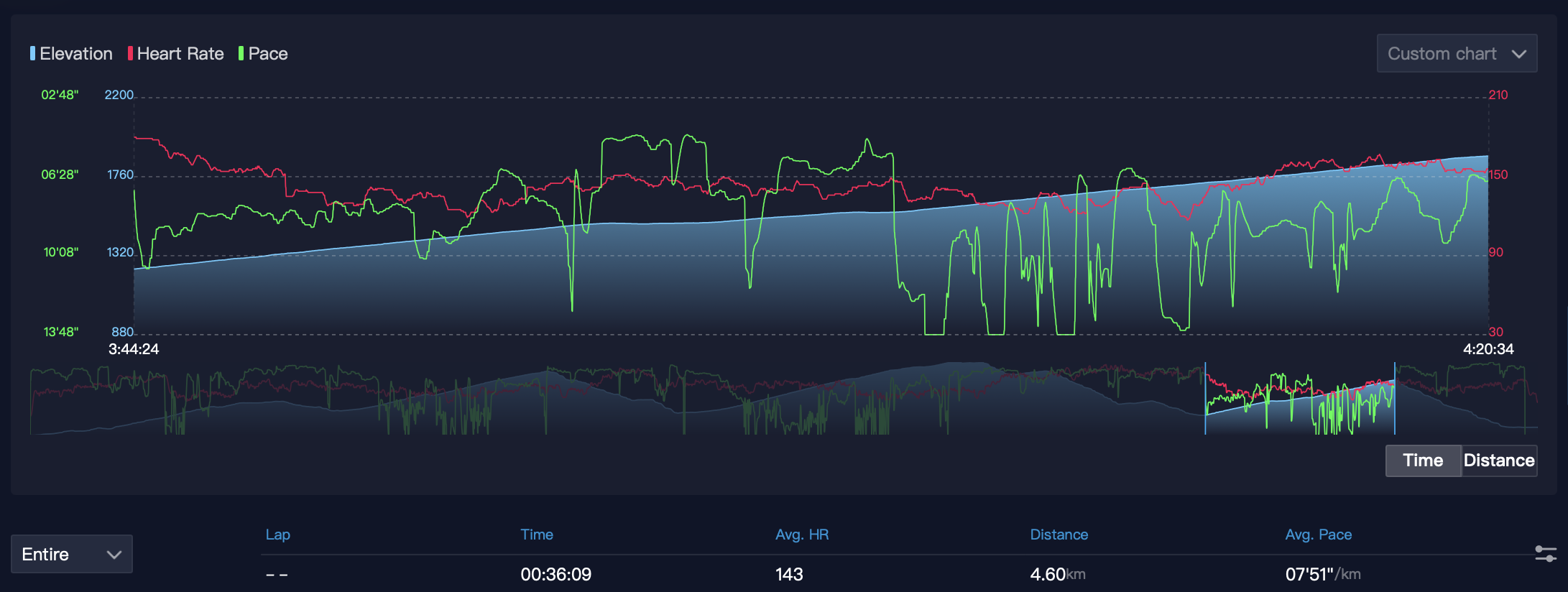
Antonio has an uphill intensity that works for him. It's remarkable that on nearly every uphill portion, he was able to hold the same intensity. Oftentimes, athletes will find an effort that is efficient for them and can hold for long periods of time. Over this 36-minute segment, Antonio was able to hold the same effort and roughly the same pace as the other inclines. If you remember, Antonio let the field go early while also holding this same effort. The fact that Antonio made up another 3 spots here goes to show that other athletes may have started too fast, and slowed in relation to Antonio's pace. Holding an average of 143 bpm with a pace of 7:51/km, Antonio now will have the energy to surge on the final downhill as he chases down 3rd place for the final podium spot. Let's see how it unfolds.
La Flegere to Chamonix
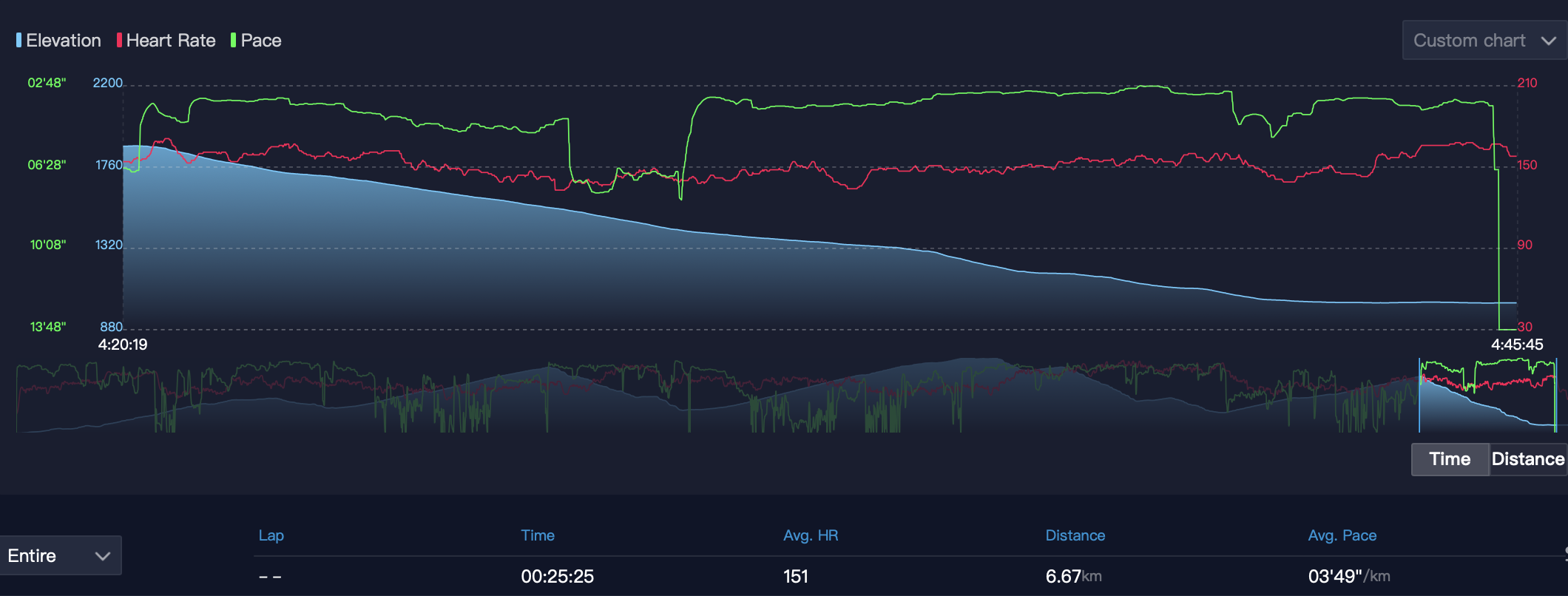
Here we go, the race to the finish. While Antonio's heart rate does drop in comparison with other downhills, there is no shame in saying he is likely fatigued. After 48+ kilometers of racing in a World Series Final, he has pushed his body to the extreme. While his average heart rate sits at 151 bpm, this is actually the fastest section of the course overall for Antonio. Within the COROS Training Hub, when sorting by 5km segments, this final 5km shows as "best" which indicates it's when Antonio was running his fastest! Passing 3rd place on the descent to Chamonix, Antonio now has entered onto the podium. Further to his credit, he finishes only 21 seconds behind 2nd place after 4:45:19 of racing! In such an elite field, these athletes perform at an incredible level which requires decision-making, execution, and strategy to all be perfect for a podium result! As the final standings are posted, the winner of 2023 OCC is Stian Angermund in 4:42:40, 2nd place is Francesco Puppi in 4:44:58, and Antonio comes in 3rd at 4:45:19!
Overall
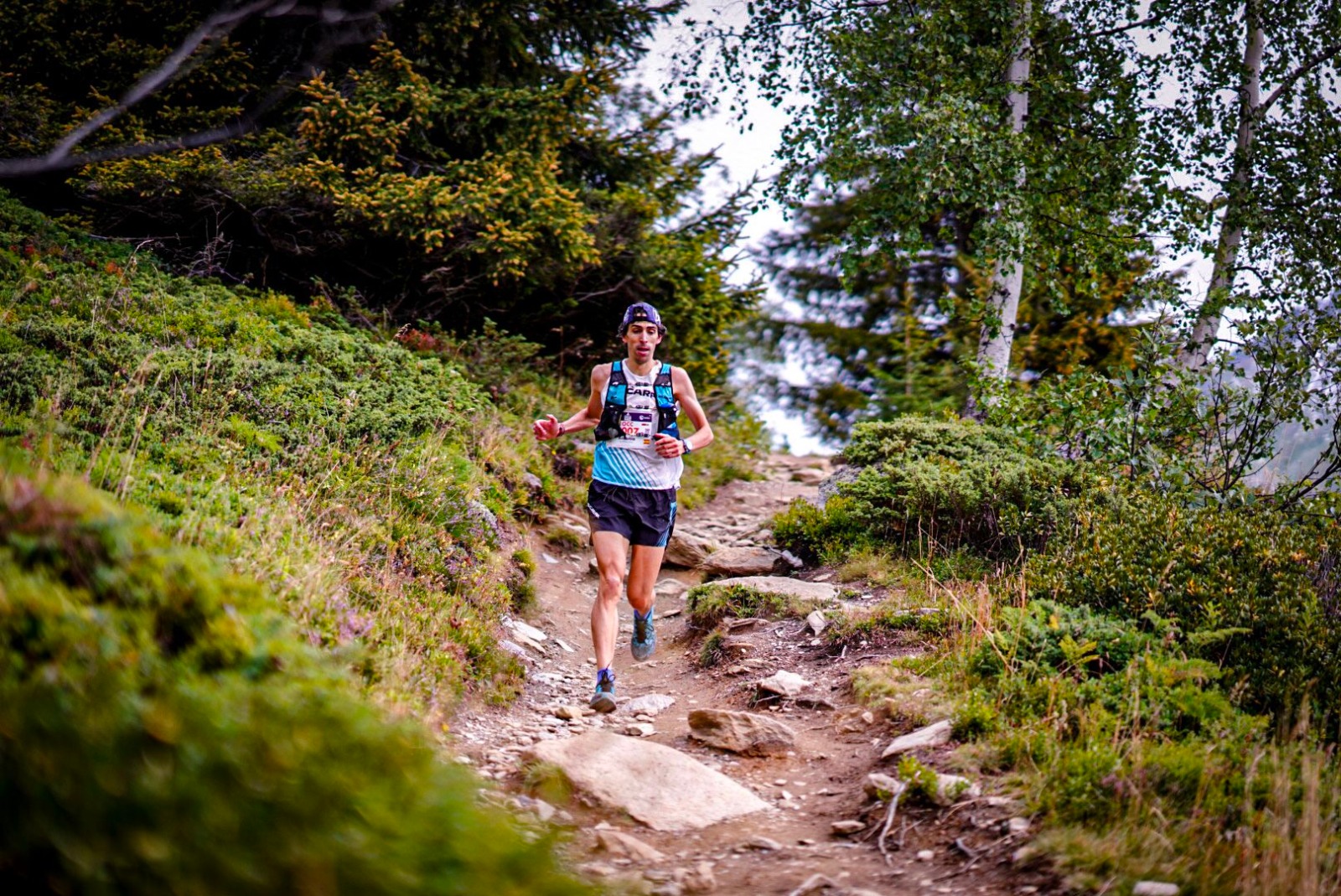
COROS wants to give a big congratulations to Antonio Martinez-Perez on an amazing 3rd-place finish at the 2023 OCC. Through his yearlong training, tactical race strategy, and phenomenal execution, Antonio was able to secure a podium in one of the best fields the sport has to offer. If you found this analysis informative or interesting, we would urge all COROS customers to look deeper into their data. This analysis was performed using our free Training Hub software featuring data that is collected on every run performed. The next time you prepare for a race, or aim to nail a race strategy, keep this analysis in mind as it's a great example of how, you too, can aim to achieve your best results yet!

/filters:quality(90)/fit-in/970x750/coros-web-faq/upload/images/a7dedff37c88161aadf9992ca4d2ab70.png)
